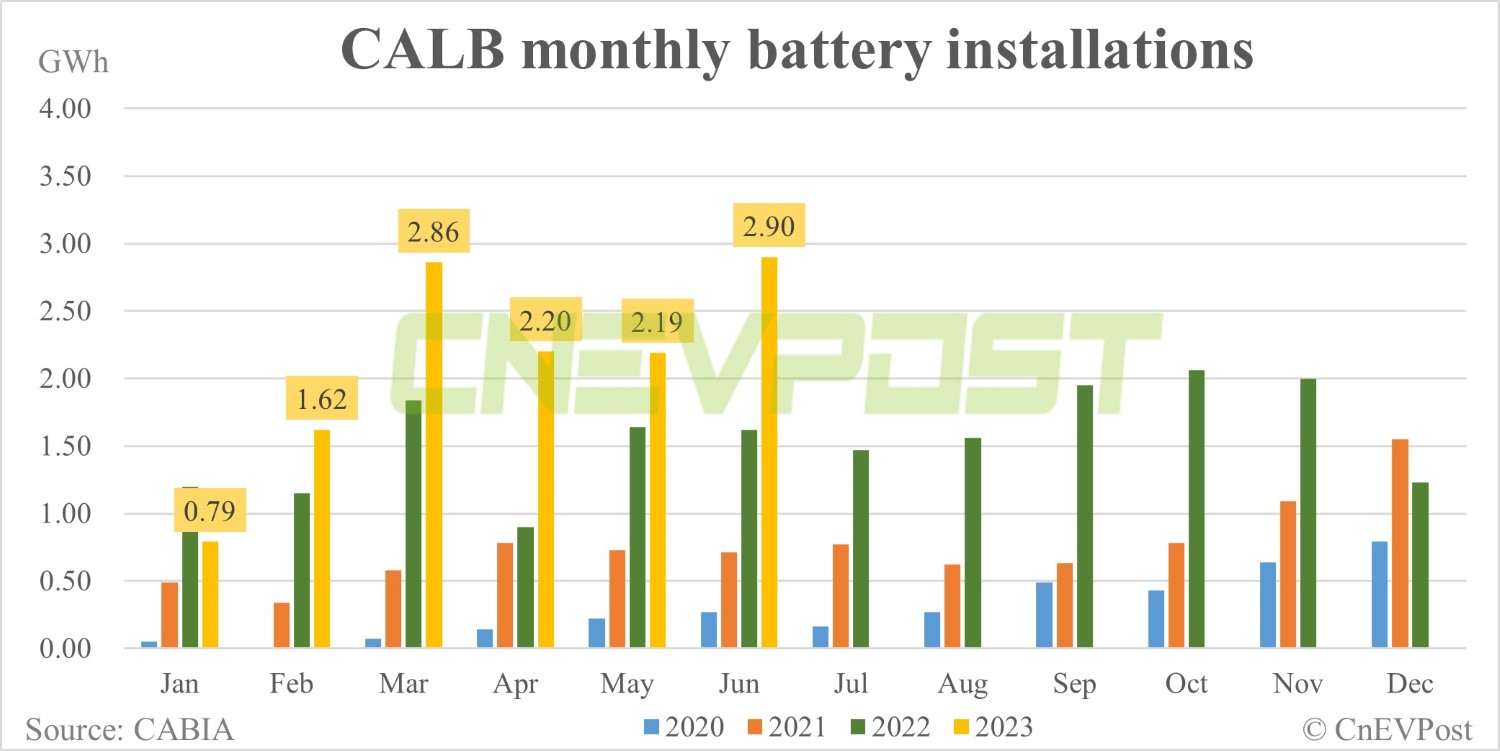The mid-size crossover market is a high-volume market, competitive and cut-throat. The Xpeng G6 stands a good chance of carving out.

This review is done by ChinaDriven, which creates content about Chinese EVs on YouTube & Twitter.
The Xpeng G6 is starting to look like a homerun for Xpeng, something they've been craving since the flaccid sales performance of the P5 & G9.
Personally, I think Xpeng should have entered the popular mid-size crossover segment years ago. But better late than never.
And with the passage of time the Xpeng G6 has been gifted with some tech it may not have had if it was created 2 or 3 years earlier.
Price
The Xpeng G6 has two-tiered Pro & Max versions in terms of its ADAS hardware and capabilities. Pro is the lower-end model, and they are priced between 209,900-234,900 RMB. The Max models are priced between 229,900-276,900 RMB.
Charging, Battery & Range
That price variation with the Pro and Max come down to battery size and single vs dual motor.
Both the cheapest Xpeng G6 Pro & Max are equipped with a single rear motor and a 66-kWh LFP battery pack claiming a 580 km range.
The long-range versions have a single rear motor and an 87.5-kWh NCM pack with a claimed range of 755 km.
The Xpeng Performance Max has a dual motor and the same larger 87.5kWh pack returning a range of 700 km.
Firstly, no optional 4C for the Xpeng G6, but 3C is standard. Xpeng lined up a test at a third-party charge station against a Tesla Model Y performance, to show that the G9 on its SEPA 2.0 platform was able to take advantage of the higher voltage.
It added double the range of the Model Y in 5mins. And while the Model Y may charge faster at a supercharger, this was just to show the Xpeng G6 could still charge fast even if not at one of Xpeng's 3C chargers.
However, if you do plug it into a 3C compatible charger you can expect to charge 10-80 percent in 19 mins and add 300 km in 10mins. Of course, these are based on the CTLC so expect a 70 percent real-world range.
Exterior

The Xpeng G6 once again brings new styling to the Xpeng model line-up. Familiar features are abundant in the G6's exterior design, the black end lower-trim all around harks to the P7, and the darkened headlight clusters seen on both the G9 & P7. The "Lightsaber" LED is still present upfront but is now broken by the Xpeng logo.
The exterior is a smooth affair all around, a familiar trait for Xpeng. Is it the most dashing, sexy crossover? Almost certainly no. Is it offensive or divisive looking? Definitely not. At the right angle, this thing looks suave. At the wrong angle...

The clever design feature Xpeng uses, which helps sculpt the looks, is called the "Suspension Roof." Using black body coloring to hide the roof line. Focusing attention away, and making it appear from the front 3/4s far more coupish than it actually is.
The back end is simplistic, with an optional auto-deploying electronic spoiler, rear LED light bar, again broken, this time by the reversing camera. Some models were lacking the optional spoiler, making the back end look a little awkward.
Trunk space isn't class-leading, although the shape is very usable. A reasonable 571 L with the rear seats up, and 1,374 L with the seats down. Dwarfed by the Tesla Model Y's 855/2041 L trunk space.
These are not just passing Tesla references, Xpeng themselves referenced the Model Y countless times. In fact, the Xpeng G6 is within millimeters size-wise of the Model Y.
Interior

Don't get into the Xpeng G6 expecting to be draped with napa leather or seas of Alcantara, it's not. But at its price point, it shouldn't be expected. Instead, we're treated to a well-screwed-together, sturdy, functional interior.
Not to say the Xpeng G6 interior is devoid of style, it doesn't cop out with the "minimalistic" approach and there's more than a lonely piece of wood in here. We get soft-touch materials in all the right places. Acoustic material is used together with texture and accents to make an all-black interior look stylish.
Dig deep below your hip and you'll find hard plastics. But they've put the money into the materials you'll see and interact with on a daily basis. You can't have it all at this price point. And the interior is just a single aspect, an overall solid interior.

Tech
Xpeng has built its reputation in China as providing tech-rich EVs, and the G6 doesn't disappoint. Inside you're treated to a 10.2-inch digital instrument panel with full ADAS visualization, a 14.9-inch central touchscreen which is bright and responsive, thanks to its Snapdragon 8155 chip.
Audio equipment is decent, an 18-speaker surround sound system, with Dolby spatial audio. Something you won't find on many EVs at this price point. You also still get Xpeng's renowned in-seat driver speakers for sat-nav, phone calls, and playing audio to reduce disturbance to others.
Some more nerdy tech for the Xpeng G6. It's riding on Xpeng's new SEPA 2.0 platform which will be able to underpin a lot of future models of varying sizes. It brings a lot of advancements including die-casting, cell-to-body, SiC chips, and it's an 800 V platform.
ADAS

Xpeng has been the Chinese OEM at the forefront of ADAS since it launched. It's something the company pushes as its competitive edge. The Xpeng G6 introduces XNGP, ditching reliance on HD maps and using them only as a redundancy. In simple terms, the G6 will create real-time HD maps.
The ADAS is split between Pro & Max models. Pro has access to only Xpilot highway relying on a single Orin-X chip. While Max models have lidar and 2 Orin-x chips giving access to the newer XNGP Highway & City.
We drove both on the highway with XNGP and in the city. If you are unaware Xpeng was one of the first Chinese OEMs with an NOA function, and has been leading the pack for quite some time.
The Highway XNGP is rock solid, making lane changes into spaces with cars coming up from behind even I'd think twice about. Absolutely feels like a polished finished product.
XNGP City is impressive, but far from the same consistency and dependability of the highway XNGP. To be expected, city environment obviously poses a lot more challenges. Xpeng didn't pull any punches on our test drive, temporary lanes due to construction, mopeds everywhere, complicated junctions, and unprotected lefts. It had it all.
I'd say it got us from A to B 80 percent of the time. And if you've never driven in China...I think you'd probably only get us there 40 percent of the time. It's manic, to say the least if you're coming from Europe or the US.
Driving and performance

We drove the full spec Xpeng G6 Performance with the dual motors putting out 358 kW and 660 Nm. It's able to sprint from a standstill to 100 kph in 3.9 s and onto a top speed of 202 kph.
The single motor version has an output of 218 kW and 440 Nm for a claimed sprint of between 6.6-5.9 s depending on battery size.
We had a chance to drive the Xpeng G6 & Model Y Performance around a track, and while I'd say the Model Y was probably the better performer with its heavier steering and inputs, the Xpeng G6 wasn't embarrassed by it.
The G6 is obviously softer than the Model Y, which is typical of Chinese EVs, most putting comfort over outright performance.
On road is where that softer set-up pays dividends. Broken urban roads & at highway speeds are not problematic, the cabin is kept quiet, and the ride is cushioned. The speed of EVs is of course intoxicating but in a daily urban environment way beyond the usable limit.
Conclusion
Tesla started the price war in China and many OEMs have responded. Xpeng's G6 has been forced to come out of the gate swing. It's low price point looks mightily attractive for the tech, features, and performance you get.
Suddenly there is a bit of buzz around Xpeng again. For a company that at the beginning of the year was starting to look like it was on the ropes, have pulled a rabbit out of the hat with the G6.
But let's hope it doesn't take Xpeng two more models until they bring another hit to the market. The mid-size crossover market is a high-volume market, competitive and cut-throat. The Xpeng G6 stands a good chance of carving out and keeping sales high with its value proposition.



